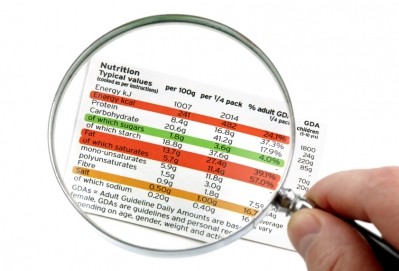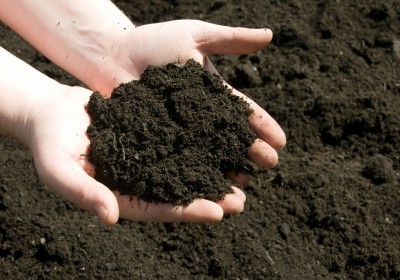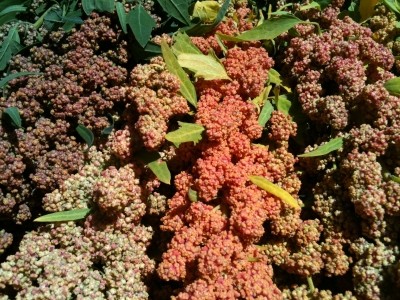Milling & Grains Bite-Size Science
Higher Mediterranean crop output, food safety in breeding, micronutrient fortification

Crop rotation improves Mediterranean yields
Crop rotation with quinoa and chickpea, instead of mono-cropping, can boost wheat yield and improve soils in challenging Mediterranean conditions, finds new research.
The study at four Mediterranean locations - Morocco, Syria, Turkey and Portugal – was conducted to determine possible solutions to improving local small-scale cropping systems for durum wheat and newer crops, such as quinoa.
Researchers acknowledged that farming in the Mediterranean is inhibited by erratic and unpredictable rainfall, high soil salinity, flooding and declining soil fertility as a result of intensive mono-cropping.
Findings from Morocco showed that introducing quinoa into the crop rotation, compared to using the mono-cropping system, over a four-year period had a positive impact on both biomass and soil organic matter.
The effects of chickpea–wheat and quinoa–wheat rotations on wheat yield in Bouchane, Morocco, were also compared with wheat mono-cropping on local farm plot. Data revealed that quinoa and chickpea have a beneficial effect on wheat yield, with rotations producing 230 % more grains than the control.
Positive increases in wheat grain total biomass, harvest index and seed weight were also noted in Turkey in year four of the study.
Yield improvements were attributed to better farming practises that improved soil fertility and productivity, reducing tillage to limit evaporation, applying manure to improve rain absorption and to more efficient irrigation systems to increase water productivity.
Source: Journal of Agronomy and Crop Science
DOI: 10.1111/jac.12066
“How Can We Improve Mediterranean Cropping Systems?”
Authors: O. Benlhabib, A. Yazar, M. Qadir, E. Lourenço and S. E. Jacobsen
Food safety must be considered in crop breeding
Reducing the free asparagine concentration of wheat grains should be a priority for plant breeders to limit consumption of dietary acrylamide, says research published in the Annals of Applied Biology.
While researchers acknowledged the need to address food security issues through the development of new wheat varieties with higher yield potential and better resistance to extreme weather conditions, they stressed that plant breeders must not compromise on food safety in the process.
“Wheat products are some of the most important contributors to dietary acrylamide intake across Europe. Breeders must beware of inadvertently increasing the acrylamide-forming potential of wheat while selecting for yield or other traits, because there is evidence from several crop species of links between asparagine metabolism, yield and protein content,” they wrote.
The study confirms wheat breeding has a proven track record at increasing yields in some regions, including the UK. But it points out that increases were not only a result of genotypic enhancement but also the application of large amounts of nitrogen and other agrochemicals. This level of intensity is heavily dependent on fossil fuels and may not be sustainable.
The authors conclude that food safety is as important as food security and that the food industry would not thank breeders for high-yielding wheat varieties that have an increased potential for the formation of processing contaminants.
Source: Annals of Applied Biology
DOI: 10.1111/aab.12108
‘Food security: the challenge of increasing wheat yield and the importance of not compromising food safety’
Authors: T. Curtis and N. G. Halford
Biofortified crops yield stronger micronutrients
There is evidence to support the breeding of plants with increased micronutrient concentrations, says a review on biofortified crops.
The bioavailability of micronutrients in unfortified staple crops in developing regions is typically low, which raises questions about the efficacy of these crops to improve population micronutrient status, reserachers said.
In a review, they compiled recent studies on the micronutrient bioavailability of biofortified staple crops, such as maize, wheat and pearl millet, to gauge the potential for improving public health through food-based nutritional fortification.
They found that while reducing the amounts of antinutrients and the conduction of food processing generally increases the bioavailability of micronutrients, antinutrients still possess important benefits and food processing results in micronutrient loss.
Biofortified foods with relatively higher micronutrient density were found to have better total absorption rates than non-biofortified varieties. Evidence therefore supports efforts to breed plants with increased micronutrient concentrations in order to decrease the influence of inhibitors and to offset losses from processing.
Source: Nutrition Reviews
DOI: 10.1111/nure.12108
‘Bioavailability of iron, zinc, and provitamin A carotenoids in biofortified staple crops’
Authors: Michael R La Frano, Fabiana F de Moura, Erick Boy, Bo Lönnerdal, Betty J Burri










